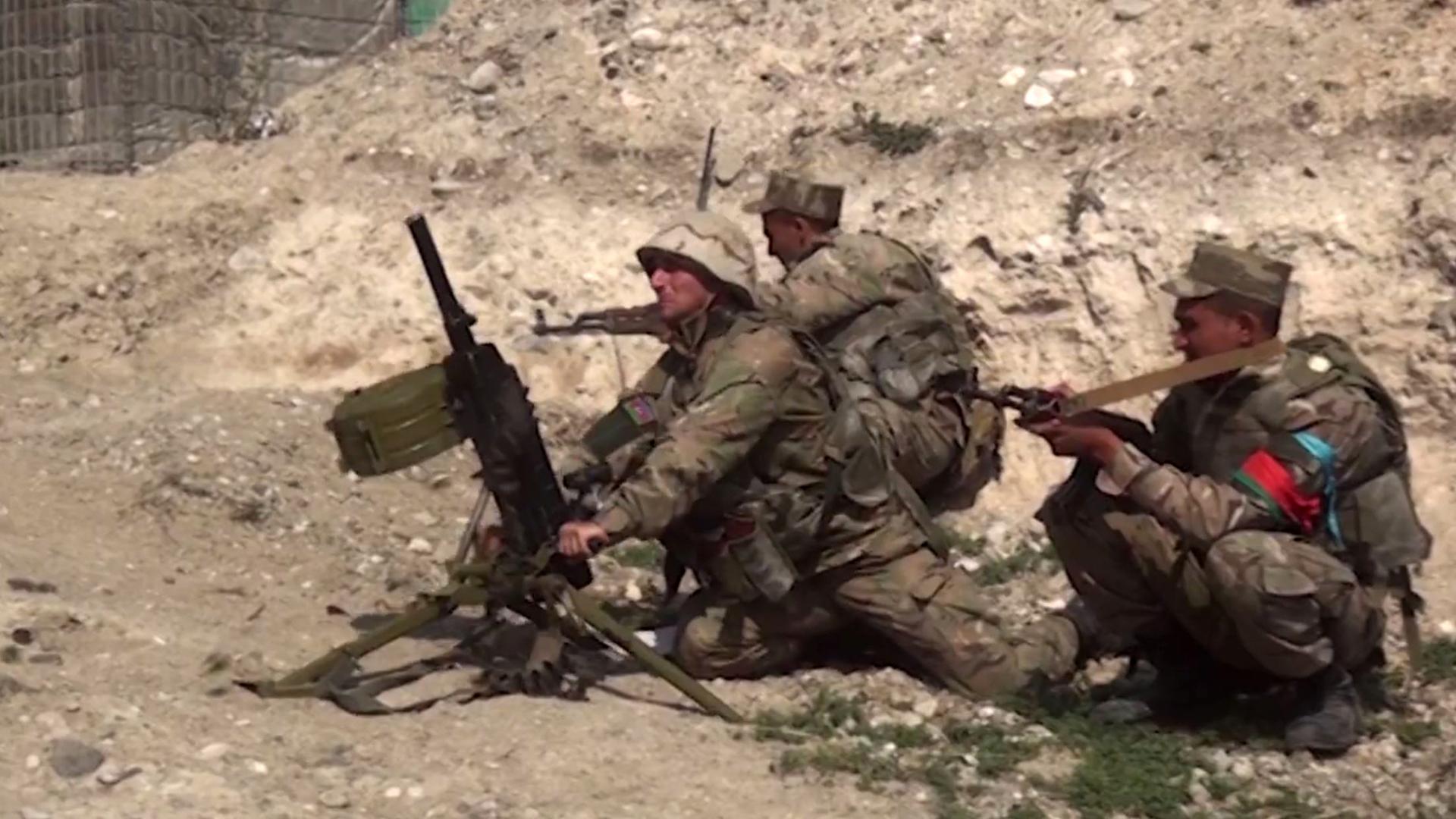Azerbaijan has significantly increased its defence capabilities, and it’s showing on the battlefield.
The Nagorno-Karabakh region is witnessing the largest military operations since the 1990s. Back then, Armenian separatists waged a full-fledged war against Azerbaijan to occupy this region and its surrounding seven districts.
Recent clashes in the Nagorno-Karabakh started on 27 September as the Azerbaijani army decided to respond to several Armenian provocations. The tensions were already high after the confrontation in Tovuz a few months ago. Since then, both sides held joint military exercises with Turkey and Russia, respectively. Therefore, the flare-up is no surprise.
The first ten days of the military operations reveal some important developments, which have not been witnessed before.
Firstly, the Azerbaijani Army is not the same underfunded and dispirited entity that existed in the 1990s. Azerbaijan has been investing highly in its defence capacity over the past decade, spending over $2 billion a year to enhance its capabilities.
Baku has partnered with Ankara, Moscow and Tel Aviv to source the latest military technologies. While Russia remains the largest supplier of the Azerbaijani arsenal, Turkey and Israel tend to supply the high-tech weaponry.
The extensive usage of drones by Azerbaijan has changed the outlook of the Nagorno-Karabakh conflict. Israeli-made kamikaze drones IAI Harop, and Turkish-made Bayraktar TB2 UCAVs gave the Azerbaijani side air superiority, which is critical in such mountainous terrain.
Drone warfare is used to soften enemy targets before ground forces move into the battlefield. This strategy allowed Baku to preserve its troops while demoralising Armenian forces by keeping them on continuous alert.
Armenia continues to reap the fruits of its membership to the Collective Security Treaty Organisation (CSTO). Russia delivers armaments to Yerevan either free of charge or based on Russian-supplied military credits.
Just recently, several reports indicated that Moscow was delivering loads of military cargo via Iranian airspace both before the July clashes and during the latest confrontation. The non-stop Russian military weapons supply to Armenian forces is a major factor that has prevented Yerevan’s troops from total collapse.
After feeling the heat in Nagorno Karabakh, the Armenian strategy consisted of spreading hostilities beyond the occupied region to other Azerbaijani territories. While the Azerbaijani Army is successfully retrieving chunks of Nagorno-Karabakh, Armenian forces are retaliating by using Soviet-made short and mid-range missiles to hit Azerbaijani towns such as Ganja, Tartar and Barda. Yerevan’s choice of these targets was deliberate: the aim is to inflict massive civilian losses and raise the political and economic cost for Baku.
Moreover, strategic energy facilities, such as Mingachevir HPP and Baku-Tbilisi-Ceyhan pipeline, were also on the hit list. This move demonstrates the Armenian is attempting to undermine the energy security and infrastructure of the entire region.
However, experts also claim that the targeting of civilians and infrastructure was planned to try and draw Baku into attacking Armenia directly. Such a reaction would boost Yerevan’s propaganda and would offer Armenia a legitimate case to call the CSTO to send its troops to Armenia.
The UN Security Council and the OSCE have failed to address the root causes of the problem, preferring to call for an immediate ceasefire. Azerbaijan’s President Ilham Aliyev argued that such a ceasefire has no purpose except to preserve the status-quo that prolongs the Armenian occupation.
One of the Minsk Group’s co-chairs, France, openly stated its position against Azerbaijan’s legitimate right to control its territory as per international law. President Emmanuel Macron declared his opposition against Azerbaijan’s so-called ‘conquest’ of Nagorno-Karabakh. Such rhetoric puts the neutrality and impartiality of the Minsk Group under question.
Lastly, the last ten days have impacted decision-making in both countries. Azerbaijan is expressing a greater determination to solve the conflict conclusively via military means. The lethargy of the international community and the perpetual status-quo has forced Baku to engage in such a strategy. On the other hand, Armenia has witnessed failure on multiple fronts, militarily, diplomatically, and in the information war.
It seems that Turkey and Russia will play lead roles in mediation and the ensuing peace process. Since the beginning of the latest confrontation, Ankara has shown its full support to Baku and even mentioned military assistance, if needed. However, Yerevan has not gathered the forceful Russian support as the Armenian leadership may have presumed. Moscow is still avoiding direct involvement and is officially calling for a ceasefire while respecting the territorial integrity of Azerbaijan.
The first diplomatic meeting amidst the military operations will be held in Geneva under the supervision of the OSCE and will be followed in Moscow a few days later. Azerbaijan is standing firm on its conditions for the ceasefire: the end of the occupation or at least a guaranteed schedule for the Armenian withdrawal from occupied Nagorno-Karabakh.
Whether the Azerbaijani terms for the ceasefire will be accepted in either Geneva or Moscow remains to be seen. Until then, Azerbaijan a will very likely continue its campaign for the liberation of Nagorno-Karabakh.
Author: Turan Gafarli
Turan Gafarli is an Assistant Researcher at TRT World Research Centre. He holds a Bachelor of Arts in History and Politics from Queen Mary University of London and a Master of Arts in Transnational Studies from University College London.
Source










Discussion about this post